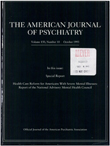Substance abuse and cerebral blood flow
Abstract
OBJECTIVE AND METHOD: This paper reviews acute and chronic effects of drugs of abuse on cerebral blood flow (CBF) and metabolism and their clinical significance. The most important source of information for the review is human research reports published in refereed journals. A few animal studies, book chapters, and abstracts that are especially relevant are also included. RESULTS: In humans, ethanol in small doses produces cerebral vasodilation; higher doses induce cerebral vasoconstriction. Chronic alcoholism is associated with reduced CBF and cerebral metabolism. Sedatives and antianxiety drugs lead to global reduction in CBF and cerebral metabolism. Caffeine, even in small doses, is a potent cerebral vasoconstrictor. Cerebral vasodilation is seen immediately after cigarette smoking, but chronic smokers show global reduction in CBF. Changes in CBF after marijuana smoking are variable; both increases and decreases are seen. Chronic marijuana smoking, however, seems to reduce CBF. Most inhalants and solvents are vasodilators; chronic abuse is accompanied by a decrease in CBF. A number of drugs of abuse, including ethanol, amphetamines, cocaine, nicotine, and caffeine-phenylpropanolamine combinations, increase the risk for stroke. Reduction in CBF associated with chronic use of ethanol, nicotine, inhalants, and solvents is at least partially reversible upon abstinence. CONCLUSIONS: Topics for future research include regional brain function, which mediates drug-induced mood changes (euphoria); CBF concomitants of psychological and physiological characteristics that increase addiction potential; changes in CBF that accompany withdrawal syndromes; mechanisms responsible for drug-induced stroke; and effects of functional and organic complications on CBF.
Access content
To read the fulltext, please use one of the options below to sign in or purchase access.- Personal login
- Institutional Login
- Sign in via OpenAthens
- Register for access
-
Please login/register if you wish to pair your device and check access availability.
Not a subscriber?
PsychiatryOnline subscription options offer access to the DSM-5 library, books, journals, CME, and patient resources. This all-in-one virtual library provides psychiatrists and mental health professionals with key resources for diagnosis, treatment, research, and professional development.
Need more help? PsychiatryOnline Customer Service may be reached by emailing [email protected] or by calling 800-368-5777 (in the U.S.) or 703-907-7322 (outside the U.S.).



